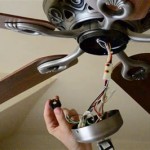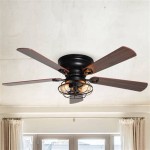What Is A Good CFM for Ceiling Fans?
Cubic feet per minute (CFM) is a crucial metric when selecting a ceiling fan. CFM measures the volume of air a fan moves per minute, directly relating to its cooling power. Understanding CFM and how it relates to room size is essential for maximizing comfort and energy efficiency.
The ideal CFM for a ceiling fan varies depending primarily on the room's size. Larger rooms require higher CFM ratings to ensure adequate air circulation. A fan with insufficient CFM for a large room will struggle to create a noticeable breeze, while an overly powerful fan in a small room can be disruptive and waste energy.
For small rooms, generally considered under 100 square feet, a ceiling fan with a CFM rating between 3,000 and 4,000 is typically sufficient. This range provides adequate airflow for cooling and ventilation without being overwhelming. Examples of such spaces include small bedrooms, offices, or bathrooms.
Medium-sized rooms, ranging from 100 to 200 square feet, benefit from ceiling fans with CFM ratings between 4,000 and 5,000. This airflow range effectively circulates air in spaces like living rooms, dining rooms, or larger bedrooms, creating a comfortable environment.
Large rooms, exceeding 200 square feet, require more powerful ceiling fans with CFM ratings above 5,000. Great rooms, open-concept kitchens, or expansive master bedrooms often fall into this category. In these situations, higher CFM ensures consistent airflow throughout the entire space.
Extra-large rooms, such as finished basements or lofts larger than 400 square feet, may benefit from ceiling fans with CFM ratings exceeding 7,000. These spaces often present unique airflow challenges due to their size and configuration, necessitating a more powerful solution. Using multiple fans in extra-large rooms can also be a viable strategy for optimizing airflow distribution.
Ceiling height also plays a role in determining the appropriate CFM. For rooms with standard ceiling heights (8-9 feet), the general CFM guidelines based on room size are usually accurate. However, for rooms with higher ceilings, a fan with a higher CFM rating is often necessary to ensure the airflow reaches the occupied zone effectively.
Beyond room size and ceiling height, blade span is another factor influencing a ceiling fan's effectiveness. Larger blades generally move more air, contributing to a higher CFM. Therefore, when comparing fans with similar CFM ratings, consider the blade span as an additional performance indicator.
The number of blades on a ceiling fan does not directly correlate with CFM. While more blades can contribute to quieter operation and smoother airflow, the blade pitch and motor power are the primary determinants of CFM. Focus on the CFM rating itself rather than the blade count when assessing a fan's performance potential.
Fan speed settings allow for adjustable airflow. Most ceiling fans offer multiple speed settings, allowing users to customize the airflow to their preference and the room's needs. Higher speed settings produce higher CFM and greater cooling power, while lower speeds offer quieter operation and gentle circulation.
Energy efficiency is an important consideration when selecting a ceiling fan. While higher CFM fans generally consume more energy, advancements in motor technology have led to the development of energy-efficient models that deliver high airflow with reduced power consumption. Look for fans with energy-efficient ratings and consider using them in conjunction with air conditioning to reduce overall energy usage.
Placement of the ceiling fan within the room impacts its effectiveness. Ideally, a ceiling fan should be installed in the center of the room to ensure optimal air circulation. If the room shape or other factors prevent central placement, consider using multiple fans to achieve even airflow distribution.
Considering these factors when selecting a ceiling fan will ensure optimal comfort and energy efficiency. Choosing the right CFM based on room size, ceiling height, and desired airflow will create a comfortable and well-ventilated space. Understanding the relationship between CFM and these factors empowers informed decisions, leading to a more pleasant and efficient home environment.
Beyond calculating CFM based on room size, it is important to consider the specific use of the space. A room intended for active use, such as a home gym or playroom, may benefit from a higher CFM than a room designed for relaxation, such as a bedroom or library. The activity level within the space should be factored into the CFM selection process.
Furthermore, climate plays a role in choosing the appropriate CFM. In warmer climates, a higher CFM may be desirable to maximize cooling potential. In milder climates, a lower CFM may be sufficient for comfortable air circulation. Taking the local climate into account ensures the selected fan meets the specific cooling needs of the environment.

Blown Away Best Ceiling Fans For Large Rooms Delmarfans Com

Understanding Ceiling Fan Airflow Hunter

How To Shop For A Ceiling Fan Lightology
Which Is The Best Powerful Ceiling Fan For Halls Quora

What Is A Good Cfm For Ceiling Fan Indoorclime

How Energy Efficient Is Your Ceiling Fan Vanguard

Blown Away Best Ceiling Fans For Large Rooms Delmarfans Com

What Matters When Selecting A Ceiling Fan Design Inspirations Lightsonline Com Blog

Understanding Ceiling Fan Airflow Hunter

What Is A Good Cfm For Ceiling Fan Indoorclime








